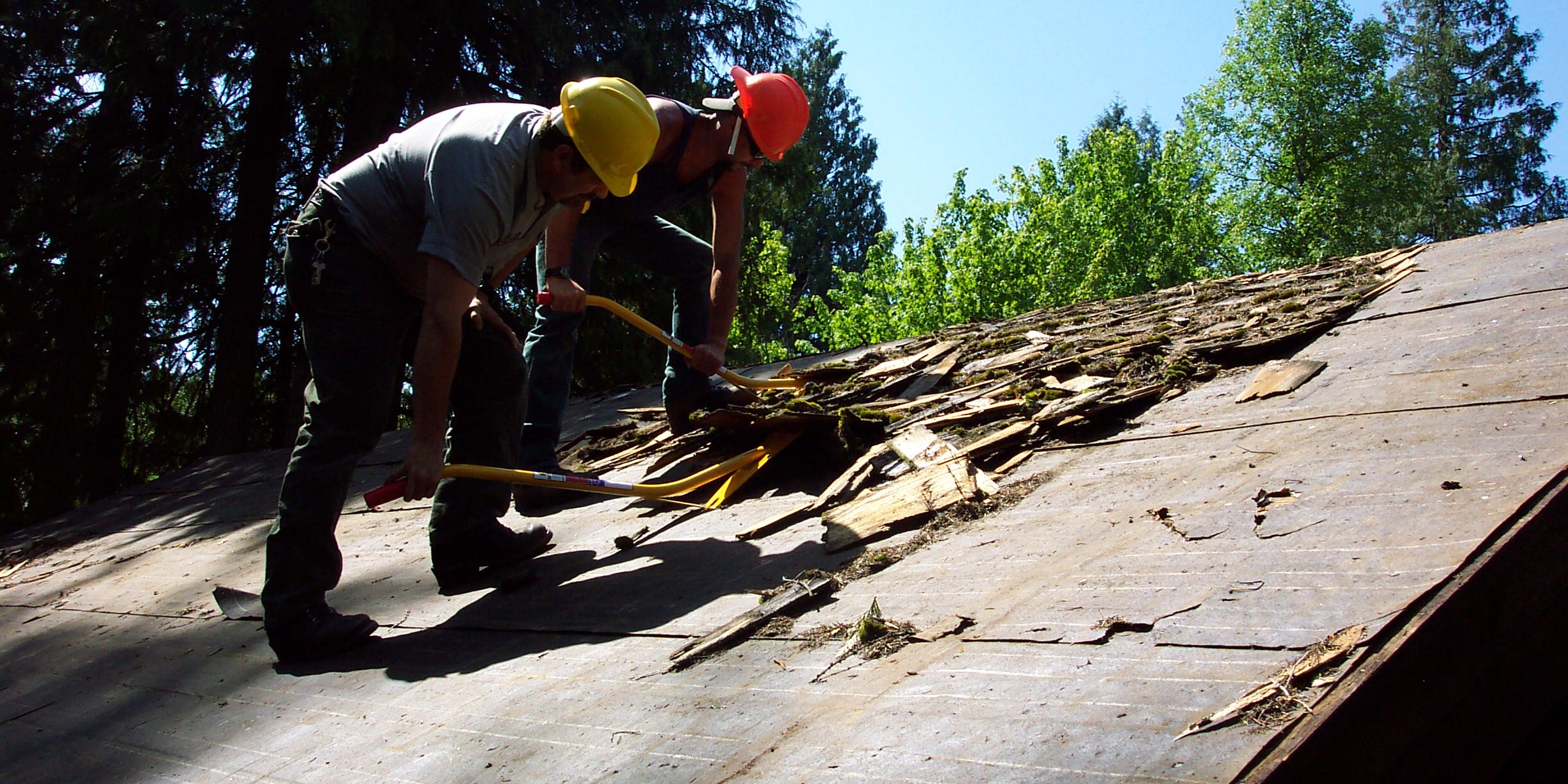One of the most important aspects of purchasing a homeowners insurance policy is what kind of roof damage will be covered. After all, roofs are expensive, and the cost of repair or replacement can be prohibitively high in some cases. Fortunately, most insurance policies cover some types of roof damage, but there are differences between approaches, and not all coverage is equal. Understanding what roof damage is covered by insurance can help you make an informed decision when purchasing a policy and ensure that your home is adequately protected.

What Kind of Roof Damage is Covered by Insurance?
Here are some common types of roof damage that may be covered by insurance:
- Hail damage: Hailstones can cause dents, cracks, and punctures in roofing materials, leading to leaks and water damage.
- Wind damage: High winds can lift or tear off shingles, loosen flashing, and cause other types of damage that can lead to leaks.
- Water damage: Water damage can occur due to various causes, such as leaks from damaged shingles, ice dams, or clogged gutters. It can lead to mold growth, wood rot, and other structural damage.
- Fire damage: If your home catches fire, the roof may sustain damage from the flames or smoke. Even if the damage is not severe, it may require repairs or replacement.
- Falling object damage: Objects such as tree branches, satellite dishes, or debris can fall onto the roof and cause damage.
- Snow and ice damage: Heavy snow and ice can cause roof collapses, damage to gutters and downspouts, and ice dams, which can lead to leaks.
It’s important to note that the specific types of roof damage covered by insurance may vary depending on your insurance policy and the cause of the damage. It’s best to review your policy and contact your insurance company if you have any questions about what types of roof damage are covered.
In my experience, the most common reason for roof damage is wind and extreme weather conditions.
Most standard homeowners insurance policies cover damages caused by specific events outside the homeowner. This includes fire, windstorms, hail, lightning strikes, and other natural disasters that can cause significant roof damage. Depending on the policy language, coverage may extend to direct and indirect losses incurred because of these events. For instance, if the wind were to tear off part of your roof shingles during a storm and rainwater caused further damage within your house due to leakage. As a result, then both issues may be covered under the same policy provision.
In addition to covering perils such as those mentioned above, many insurance companies also offer coverage for accidental or deliberate acts that may affect your home, including theft from third parties unrelated to you or your property.
In addition, some insurance policies may cover accidental damages, such as falling tree branches or objects from nearby construction sites exposed to chaotic weather conditions. Furthermore, many insurers must cover any sudden structural changes in your home’s heavy snow accumulations or ice dams in cold climates – pr. Provided said problems were negligence on your part (such as not keeping gutters clear).
It’s important to understand that most policies will only offer compensation up to their stated limit; if the amount required for repairs exceeds this limit, you will need additional coverage or have to pay out-of-pocket costs yourself. Furthermore, many policies require an inspection before processing any claims related to roof damage; this assessment must confirm whether the incident was covered under the contract terms between you and the insurer. It’s also essential to forget about deductibles when assessing how much protection you need. While they reduce premiums significantly, they must still be considered when considering overall financial liability if something happens with your home’s structures and materials in its construction/repair process.
In conclusion, understanding that your policy covers roof damage can save you time and money, especially for the most significant investments made when maintaining our homes properly. Make sure that you read through each clause carefully. Hence, you understand precisely which perils are included (and excluded) from coverage – neglecting this step could leave you vulnerable should something unexpected happen!
